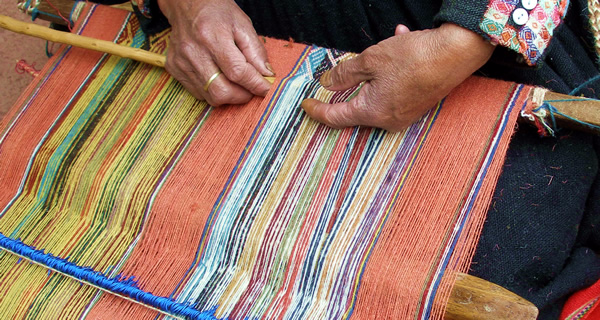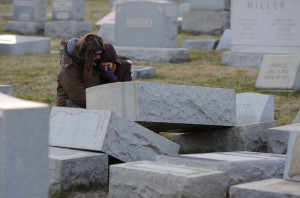Parashat T’rumah
Exodus 25:1 – 27:19
There is a portion of Torah that is mentioned in our Torah text this week, but it has never been written down. It is the Torah of Beauty.
This parashah begins the lengthy description of the creation of a Tent of Meeting – a portable sanctuary – to serve as the sacred shrine for Israel and God. God describes each element of this Tabernacle, its materials, furniture, implements and decorations, and declares: “Let them make a sanctuary for Me and I will dwell among them!” (Ex. 25:8)
This statement is full of excited anticipation. God’s personal dream of dwelling among us will soon be fulfilled. The very next verse has God continuing with enthusiasm: “Let it all be just as I am showing you, the design of the Tabernacle and the design of all its implements; you should do it just so.” (v. 9) We learn from this verse that God is not simply dictating the words of the Torah to Moses. The descriptions of this sanctuary are not confined to words alone. There are pictures, too! We should visualize God showing Moses all the drawings, the illustrations and sketches, imagined scenes of worship as well as the swatches of fabric. We are familiar with the idea that the Torah has a written component and an oral commentary. Now we find out that it had a visual commentary also. Later, after describing the menorah, God says again: “See it and make it according to their designs that you are being shown on the mountain.” (Ex. 25:40) As God put forward each detail of the plan, as recorded in the Torah’s words, there lay a sheaf of images, or, perhaps, a kind of celestial “youtube” video right alongside.
We still have the words of the Torah, lovingly and scrupulously preserved in our Torah scrolls and our printed volumes. And we have the ongoing Oral Torah preserved for us in our learned tomes of Talmud and midrash, commentary, codes and responsa. But the visual Torah that God showed Moses has not been definitively passed down to us. The Torah of Beauty is not written or recorded. Has it been lost, or do we still have a hold on it?
In the case of the Tabernacle, it all depended on Moses’ own ability to recall his amazement and appreciation of the images that he alone had seen, and then to convey them, as he spoke his verbal messages, to the actual artists who would do the work. They were the ones God was entrusting to faithfully follow God’s own designs. But these were designs that they had never actually beheld. Indeed, God seems to have withdrawn those Divine images in exchange for encouraging the artistic creations of human artists. God wished that, in creating their work, the artists would strive to give earthly form to God’s dreams, for, as the Psalmist tells us, “God’s voice is in beauty.” (Ps. 29:4)
Shabbat Shalom
Rabbi David Greenstein
![]()
Subscribe to Rabbi Greenstein’s weekly d’var Torah
Image: “Traditional weaving techniques” by Thom Quine is licensed under CC BY 2.0
In recent days more hateful acts of vandalism have been directed at Jewish institutions and cemeteries as well as at mosques In the wake of this hate it is a comfort to know that the Muslim community has been very generous in raising funds and bringing volunteers to repair our desecrated cemeteries. The Jewish community has responded generously in the same spirit.
Here are two links for those moved to support these efforts –
Donations for the desecrated cemetery in Philadelphia – through Federation: https://www.jewishphilly.org/donate-now-mt-carmel-cemetery#
Donations to support the Tampa Mosque after the arson attack there – https://www.launchgood.com/project/stand_with_new_tampa_muslims_against_hate#/
Rabbi David Greenstein
- Toby Stein: In Memoriam - Thu, Feb 8, 2024
- Faithfulness and Hope: Parashat Sh’lach - Thu, Jun 23, 2022
- Past Their Prime: Parashat B’ha`a lot’kha - Thu, Jun 16, 2022


